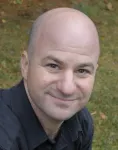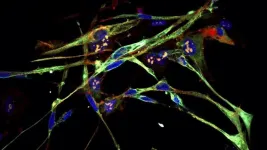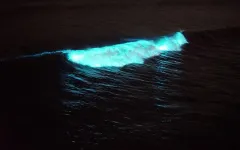(Press-News.org) AMHERST, Mass. – A team of computer scientists at the University of Massachusetts Amherst, led by Emery Berger, recently unveiled a prize-winning Python profiler called Scalene. Programs written with Python are notoriously slow—up to 60,000 times slower than code written in other programming languages—and Scalene works to efficiently identify exactly where Python is lagging, allowing programmers to troubleshoot and streamline their code for higher performance.
There are many different programming languages—C++, Fortran and Java are some of the more well-known ones—but, in recent years, one language has become nearly ubiquitous: Python.
“Python is a ‘batteries-included’ language,” says Berger, who is a professor of computer science in the Manning College of Information and Computer Sciences at UMass Amherst, “and it has become very popular in the age of data science and machine learning because it is so user-friendly.” The language comes with libraries of easy-to-use tools and has an intuitive and readable syntax, allowing users to quickly begin writing Python code.
“But Python is crazy inefficient,” says Berger. “It easily runs between 100 to 1,000 times slower than other languages, and some tasks might take 60,000 times as long in Python.”
Programmers have long known this, and to help fight Python’s inefficiency, they can use tools called “profilers.” Profilers run programs and then pinpoint why and which parts are slow.
Unfortunately, existing profilers do surprisingly little to help Python programmers. At best, they indicate that a region of code is slow, and leave it to the programmer to figure out what, if anything, can be done.
Berger’s team, which included UMass computer science graduate students Sam Stern and Juan Altmayer Pizzorno, built Scalene to be the first profiler that not only precisely identifies inefficiencies in Python code, but also uses AI to suggest how the code can be improved.
“Scalene first teases out where your program is wasting time,” Berger says. It focuses on three key areas—the CPU, GPU and memory usage—that are responsible for the majority of Python’s sluggish speed.
Once Scalene has identified where Python is having trouble keeping up, it then uses AI—leveraging the same technology underpinning ChatGPT—to suggest ways to optimize individual lines, or even groupings of code. “This is an actionable dashboard,” says Berger. “It’s not just a speedometer telling you how fast or slow your car is going, it tells you if you could be going faster, why your speed is affected and what you can do to get up to maximum speed.”
“Computers are no longer getting faster,” says Berger. “Future improvements in speed will come less from better hardware and more from faster, more efficient programming.”
Scalene is already in wide use and has been downloaded more than 750,000 times since its public unveiling on GitHub. The research that led to the development of Scalene was supported by the National Science Foundation. A paper describing this work appeared at this year’s USENIX Conference on Operating System Design and Implementation, where it won a Best Paper Award.
Contacts: Emery Berger, emeryb@umass.edu
Daegan Miller, drmiller@umass.edu
END
UMass Amherst computer scientists use AI to accelerate computing speed by thousands of times
Their development Scalene, an open-source tool for dramatically speeding up the programming language Python, circumvents hardware issues limiting computer processing speeds
2023-08-28
ELSE PRESS RELEASES FROM THIS DATE:
Rare disease shares mechanism with cystic fibrosis
2023-08-28
Aug. 28, 2023
Images
ANN ARBOR—University of Michigan researchers have discovered that the same cellular mechanism involved in a form of cystic fibrosis is also implicated in a form of a rare disease called cystinosis.
The mechanism cleans up mutated proteins. In cystinosis, a genetic disease, this allows cystine crystals to build up in the cell. This disrupts the cell, and eventually, tissues and ultimately organs, particularly the kidneys and the eyes.
The problem begins when the lysosome, an organelle within the cell, is unable to ...
Once rhabdomyosarcoma, now muscle
2023-08-28
“Every successful medicine has its origin story. And research like this is the soil from which new drugs are born,” says Cold Spring Harbor Laboratory Professor Christopher Vakoc.
For six years, Vakoc’s lab has been on a mission to transform sarcoma cells into regularly functioning tissue cells. Sarcomas are cancers that form in connective tissues like muscle. Treatment often involves chemotherapy, surgery, and radiation—procedures that are especially tough on kids. If doctors could transform cancer cells into healthy cells, it would offer patients a whole new treatment option—one that could spare them and their families a great deal of ...
Past abrupt changes in North Atlantic Overturning have impacted the climate system across the globe
2023-08-28
The Dansgaard-Oeschger events are rapid Northern-Hemisphere temperature jumps of up to 15°C in Greenland that repeatedly occurred within a few decades during the last ice age. “These events are the archetype of abrupt climate changes and further increasing our understanding of them is crucial for more reliable assessments of the risk and possible impacts of future large-scale climate tipping events”, says Niklas Boers from the Potsdam Institute for Climate Impact Research (PIK) and the Technical University of Munich, one of the authors of the study to be published in the Proceedings of the National Academy of Sciences PNAS.
In the ...
Historic red tide event of 2020 fueled by plankton super swimmers
2023-08-28
A major red tide event occurred in waters off Southern California in the spring of 2020, resulting in dazzling displays of bioluminescence along the coast. The spectacle was caused by exceedingly high densities of Lingulodinium polyedra (L. polyedra), a plankton species renowned for its ability to emit a neon blue glow. While the red tide captured the public’s attention and made global headlines, the event was also a harmful algal bloom. Toxins were detected at the height of the bloom that had the potential to harm marine life, and dissolved oxygen levels dropped to near-zero as the extreme biomass of the red tide decomposed. This lack of oxygen led to fish die-offs ...
Intravascular imaging associated with improved outcomes compared with angiography
2023-08-28
Amsterdam, Netherlands – 27 Aug 2023: Intravascular imaging-guided percutaneous coronary intervention (PCI) is associated with a lower rate of target lesion failure compared with angiography-guided PCI, according to late breaking research presented in a Hot Line session today at ESC Congress 2023.1
Numerous randomised trials have compared intravascular imaging-guided PCI with angiography-guided PCI. However, most of these prior trials have used intravascular ultrasound (IVUS). Optical coherence ...
Pulsed field ablation is noninferior to thermal ablation in paroxysmal atrial fibrillation
2023-08-28
Amsterdam, Netherlands – 27 Aug 2023: Pulsed field ablation (PFA) is as effective and safe as conventional thermal ablation for the treatment of paroxysmal atrial fibrillation (AF), according to late breaking research presented in a Hot Line session today at ESC Congress 2023.1
ESC guidelines recommend catheter ablation after failure of drug therapy in patients with paroxysmal AF.2 Conventional ablation technology uses thermal energy (either heat/radiofrequency energy or cold/cryothermal energy) to ablate the tissue. Unlike thermal ablation, PFA uses high energy electrical pulses to destroy tissue by a process called electroporation. Preclinical ...
Mazin to study ab initio engineering of doped-covalent-bond superconductors
2023-08-28
Mazin To Study Ab Initio Engineering Of Doped-Covalent-Bond Superconductors
Igor Mazin, Professor of Practice for Advanced Studies in Theoretical Physics, Quantum Materials Center, Physics and Astronomy, is set to receive funding for the project: "Collaborative research: Ab Initio Engineering of Doped-Covalent-Bond Superconductors."
This EAGER award will support a joint computational and theoretical effort to guide the search for practical superconducting materials.
Superconductors carry electrical current without any resistance when cooled down below a certain material-dependent ...
Marasco bridging chemistry & AI-empowered imaging for secure & trustworthy human identity verification
2023-08-28
Marasco Bridging Chemistry & AI-Empowered Imaging For Secure & Trustworthy Human Identity Verification
Emanuela Marasco, Assistant Professor, Center for Secure Information Systems, received funding for the project: "EAGER: SaTC: Sweaty Digits: Bridging Chemistry and AI-Empowered Imaging for Secure and Trustworthy Human Identity Verification."
Marasco seeks to characterize a person's extrinsic and intrinsic features for a more accurate representation of their identity by exploiting selected compounds ...
COS researchers transitioning training dataset labeling tool to support discoveries in earth science & heliophysics
2023-08-28
COS Researchers Transitioning Training Dataset Labeling Tool To Support Discoveries In Earth Science & Heliophysics
Chaowei Yang, Professor, Director, NSF Spatiotemporal Innovation Center, Geography and Geoinformation Science, and Jie Zhang, Professor, Physics and Astronomy, received funding for the project: "Transitioning a Training Dataset Labeling Tool (TDLT) to Support Discoveries in Earth Science and Heliophysics."
The researchers are creating a generalizable training dataset labeling tool for both Earth and heliophysics by ...
Still separate and unequal: How subsidized housing exacerbates inequality
2023-08-28
For years, scholars, advocates and journalists have highlighted the ongoing racism and segregation in the housing market, yet a segment of the housing market — government-subsidized housing — has been overlooked, until now.
A new study from researchers at Washington University in St. Louis and other institutions is the first in decades to investigate racial inequality in the subsidized housing market. Using restricted 2017 American Housing Survey data provided by the U.S. Department ...
LAST 30 PRESS RELEASES:
Tracing the quick synthesis of an industrially important catalyst
New software sheds light on cancer’s hidden genetic networks
UT Health San Antonio awarded $3 million in CPRIT grants to bolster cancer research and prevention efforts in South Texas
Third symposium spotlights global challenge of new contaminants in China’s fight against pollution
From straw to soil harmony: International team reveals how biochar supercharges carbon-smart farming
Myeloma: How AI is redrawing the map of cancer care
Manhattan E. Charurat, Ph.D., MHS invested as the Homer and Martha Gudelsky Distinguished Professor in Medicine at the University of Maryland School of Medicine
Insilico Medicine’s Pharma.AI Q4 Winter Launch Recap: Revolutionizing drug discovery with cutting-edge AI innovations, accelerating the path to pharmaceutical superintelligence
Nanoplastics have diet-dependent impacts on digestive system health
Brain neuron death occurs throughout life and increases with age, a natural human protein drug may halt neuron death in Alzheimer’s disease
SPIE and CLP announce the recipients of the 2025 Advanced Photonics Young Innovator Award
Lessons from the Caldor Fire’s Christmas Valley ‘Miracle’
Ant societies rose by trading individual protection for collective power
Research reveals how ancient viral DNA shapes early embryonic development
A molecular gatekeeper that controls protein synthesis
New ‘cloaking device’ concept to shield sensitive tech from magnetic fields
Researchers show impact of mountain building and climate change on alpine biodiversity
Study models the transition from Neanderthals to modern humans in Europe
University of Phoenix College of Doctoral Studies releases white paper on AI-driven skilling to reduce burnout and restore worker autonomy
AIs fail at the game of visual “telephone”
The levers for a sustainable food system
Potential changes in US homelessness by ending federal support for housing first programs
Vulnerability of large language models to prompt injection when providing medical advice
Researchers develop new system for high-energy-density, long-life, multi-electron transfer bromine-based flow batteries
Ending federal support for housing first programs could increase U.S. homelessness by 5% in one year, new JAMA study finds
New research uncovers molecular ‘safety switch’ shielding cancers from immune attack
Bacteria resisting viral infection can still sink carbon to ocean floor
Younger biological age may increase depression risk in older women during COVID-19
Bharat Innovates 2026 National Basecamp Showcases India’s Most Promising Deep-Tech Ventures
Here’s what determines whether your income level rises or falls
[Press-News.org] UMass Amherst computer scientists use AI to accelerate computing speed by thousands of timesTheir development Scalene, an open-source tool for dramatically speeding up the programming language Python, circumvents hardware issues limiting computer processing speeds




